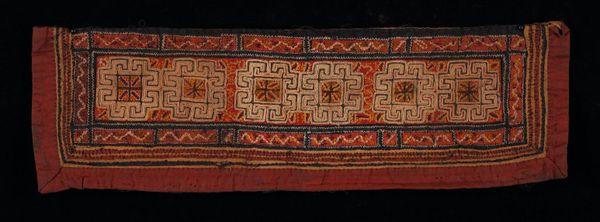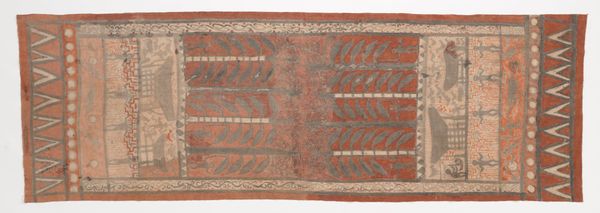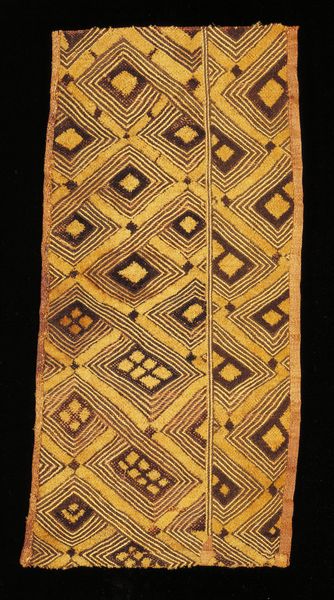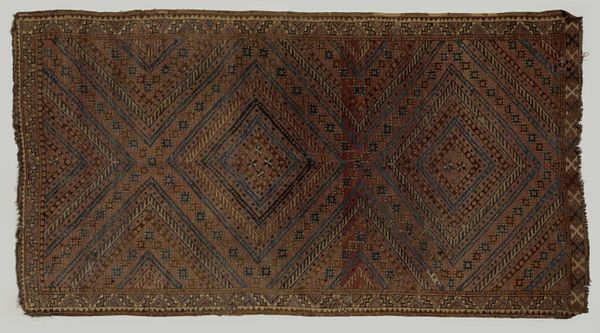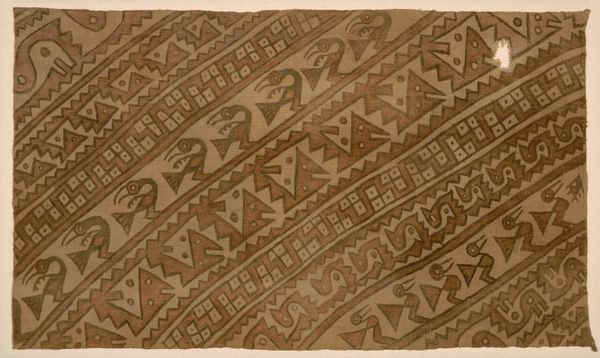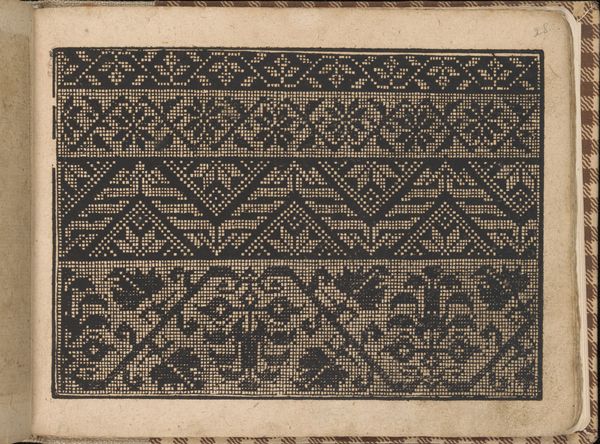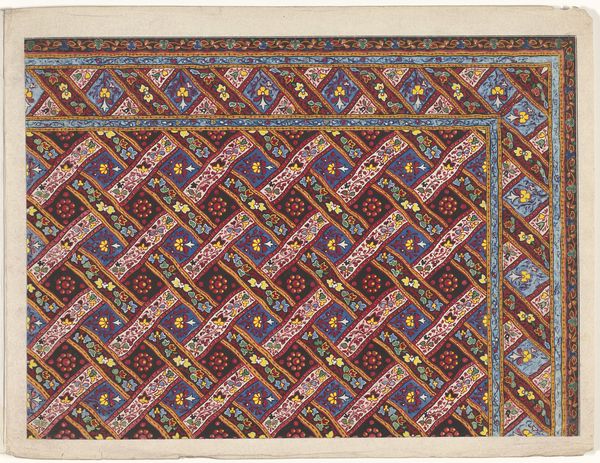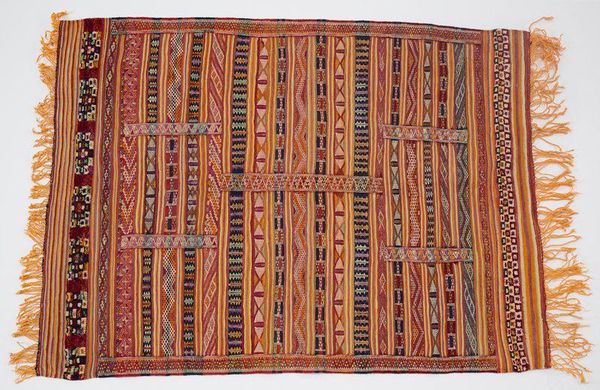
Ceremonial Textile (mbesa tali tau batu or pewo) 18th/19th century
0:00
0:00
weaving, textile
#
pattern
#
pattern
#
weaving
#
textile
#
geometric pattern
#
geometric
#
geometric-abstraction
Dimensions: 309.4 × 32 cm (121 3/4 × 12 5/8 in.)
Copyright: Public Domain
Curator: This ceremonial textile, originating from the Rongkong region and dating back to the 18th or 19th century, offers a glimpse into a rich cultural history. It’s currently held here at the Art Institute of Chicago. Editor: The first thing that strikes me is the incredible intricacy, a delicate, almost meditative patterning across the surface. I’m interested in the labor involved in crafting this object. Curator: Indeed, known as mbesa tali tau batu or pewo, these textiles served a crucial role in Rongkongese society. The motifs we see – those interconnected geometric shapes – resonate with deeper cosmological beliefs related to ancestry and the cyclical nature of life. It reflects symbolic systems integral to indigenous worldviews. Editor: Thinking about it from a material perspective, I wonder about the specific fibers used and the dye processes involved in achieving these warm, earthy tones. What would the creation of this object meant in terms of resource gathering, preparation and skill in a specific cultural moment? Curator: These textiles, typically woven from cotton, utilized natural dyes sourced locally. Specific designs were linked to certain clans or social ranks. Passed down through generations, it signifies a continuity of memory. The complex process speaks of collaboration within a community, perhaps a communal practice tied to shared values. Editor: It does pose questions about its use-value then, how the act of creation isn’t simply artistic, but fundamental in understanding societal power structures. The symbolism might even play into control of resources and social hierarchy through its craft. Curator: The cloth offers more than simple utilitarian purpose; the imagery provides an iconographic language. The details serve as records of tradition, serving as symbolic maps of their identity and world. Editor: It's a potent example of how closely intertwined materials and meanings can be. Curator: Precisely, each component resonates, carrying meaning across time and communities. Editor: It truly does prompt me to reconsider the boundaries of artistic creation, its entanglement within community and purpose.
Comments
No comments
Be the first to comment and join the conversation on the ultimate creative platform.


